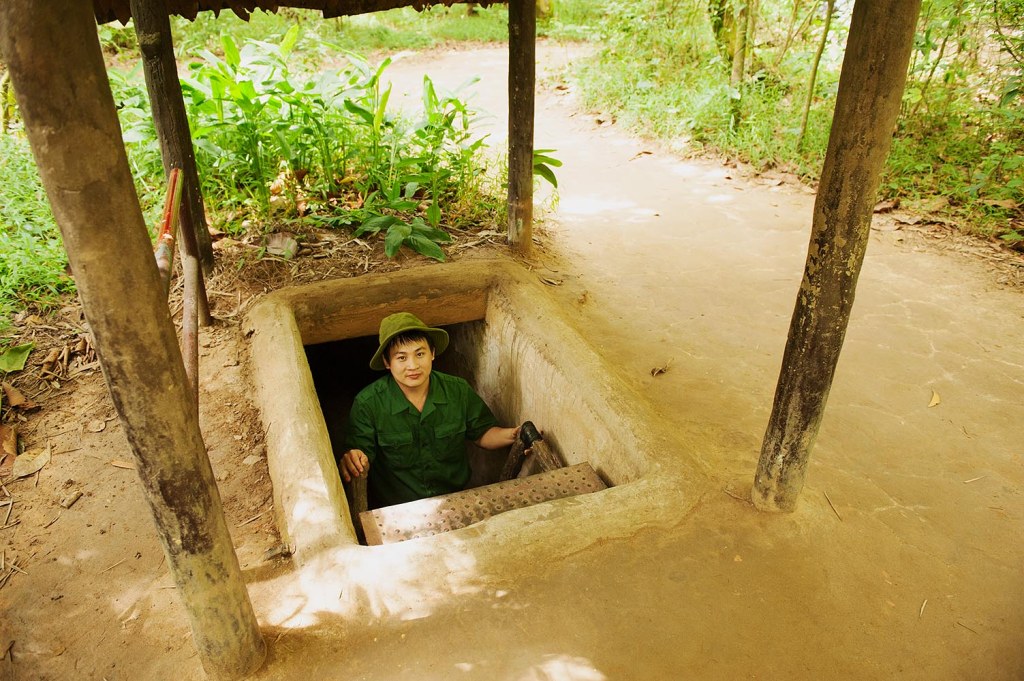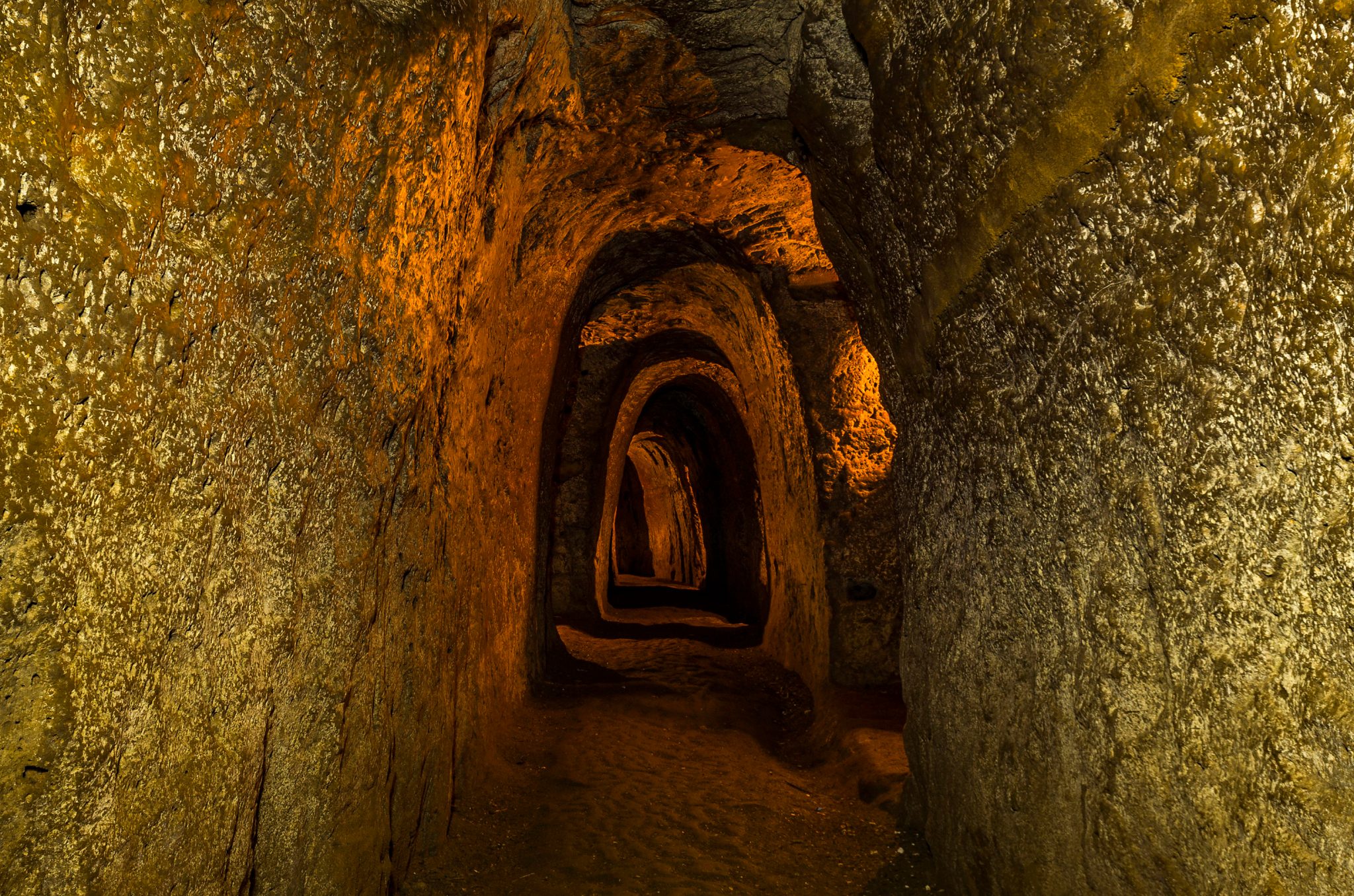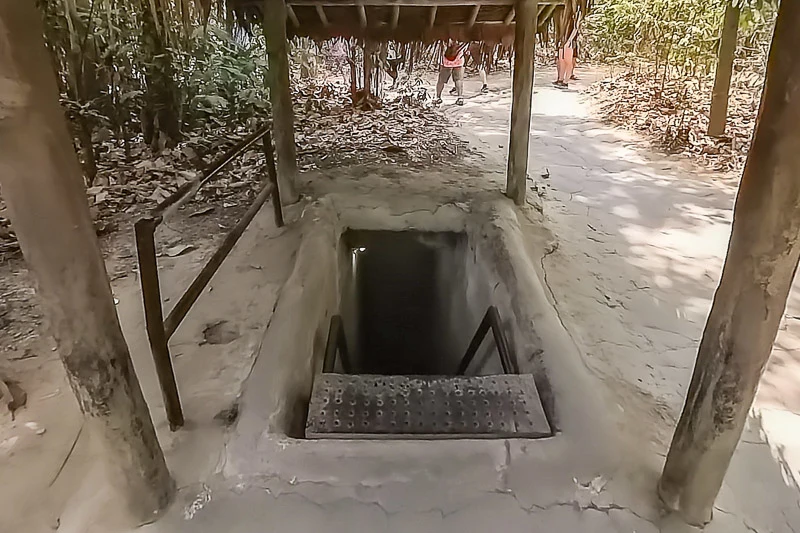Table of Contents
In the heart of Vietnam, amidst the lush greenery of the Cu Chi District, lies a subterranean labyrinth of tunnels that has become a symbol of Vietnamese resilience and ingenuity. Known as the Cu Chi Tunnels ventilation, this intricate network of underground passages, chambers, and booby traps played a pivotal role in the Vietnamese resistance against foreign occupation during the Vietnam War. Today, the tunnels stand as a testament to the indomitable spirit of the Vietnamese people and offer a unique glimpse into their struggle for independence.

Venturing into the Cu Chi Tunnels ventilation is like embarking on a journey through history. The tunnels, which span over 200 kilometers, were meticulously constructed by hand over several decades, primarily during the Vietnam War. The labyrinthine network of passages, ranging from narrow crawl spaces to wider chambers, served as a vital logistical and strategic asset for the Viet Cong, enabling them to move soldiers, supplies, and equipment undetected.
The Construction of the Tunnels
The construction of the Cu Chi Tunnels was a remarkable feat of engineering and determination. The tunnels were dug deep underground, often reaching depths of up to 12 meters. The entrances were carefully concealed, often hidden beneath dense vegetation or disguised as innocuous features such as anthills or water wells. The tunnels themselves were cleverly designed with multiple levels, ventilation systems, and even underground kitchens and hospitals.
The Viet Cong used simple tools such as shovels, hoes, and pickaxes to dig the tunnels, and they did so at night to avoid detection. The soil was then removed and dispersed throughout the surrounding area, making it difficult for enemy forces to identify the location of the tunnels. The tunnels were also reinforced with bamboo and wood to prevent collapse and to provide support.
The Role of Ventilation in the Tunnels
One of the most crucial aspects of the Cu Chi Tunnels was the ventilation system. As the tunnels were deep underground, air circulation was essential to prevent suffocation and the buildup of toxic gases. The Viet Cong ingeniously designed a ventilation system using bamboo pipes that extended above ground level. These pipes allowed fresh air to enter the tunnels while also acting as disguised chimneys to release smoke from cooking and heating fires.
The ventilation system was also vital in maintaining a comfortable temperature within the tunnels. The tropical climate of Vietnam meant that temperatures could reach sweltering levels, making it difficult for soldiers to spend long periods underground. The ventilation system helped to circulate cooler air from the surface, making the tunnels more bearable for those living and working inside.
The Life of the Viet Cong in the Tunnels

The Cu Chi Tunnels ventilation were not only used for transportation and storage but also served as a place of refuge for the Viet Cong. The tunnels provided shelter from enemy attacks and bombings, allowing soldiers to continue their resistance efforts without fear of being discovered. The tunnels were also equipped with basic amenities such as kitchens, sleeping quarters, and even hospitals, making it possible for soldiers to live and operate underground for extended periods.
The Challenges of Living in the Tunnels
Life in the tunnels was far from easy. Soldiers had to endure cramped and dark conditions, often spending days or weeks at a time underground. The constant threat of enemy attacks and the risk of tunnel collapses added to the already challenging living conditions. Food and water were scarce, and soldiers had to rely on supplies brought in through the tunnels or foraged from the surrounding area.
The tunnels were also infested with insects, snakes, and other pests, making it difficult for soldiers to get a good night’s sleep. The lack of natural light and fresh air also took a toll on the soldiers’ physical and mental well-being. Despite these challenges, the Viet Cong soldiers persevered, driven by their determination to fight for their country’s independence.
The Ingenuity of the Viet Cong
Living in the tunnels required a great deal of ingenuity and resourcefulness. The Viet Cong soldiers had to be creative in finding ways to make their lives underground more comfortable. They used bamboo to construct furniture, such as beds and chairs, and even created makeshift showers using buckets and pipes. They also recycled materials from discarded bombs and ammunition to create tools and weapons.
The Viet Cong also utilized the natural resources around them to survive. They grew vegetables and raised livestock in hidden gardens and pens near the tunnel entrances. They also used traps and snares to catch wild animals for food. This resourcefulness and adaptability were crucial to the Viet Cong’s survival and success in the tunnels.
The Legacy of the Cu Chi Tunnels

The Cu Chi Tunnels played a significant role in the Vietnam War and have left a lasting impact on the country’s history. Today, the tunnels are a popular tourist attraction, offering visitors a chance to experience what life was like for the Viet Cong soldiers during the war. The tunnels have also been preserved as a historical site, with some sections open to the public for exploration.
Preserving the Tunnels
Preserving the Cu Chi Tunnels ventilation has been an ongoing effort by the Vietnamese government. The tunnels have been reinforced and restored to ensure the safety of visitors while still maintaining their authenticity. Some areas have been widened to accommodate tourists, but the majority of the tunnels remain in their original form.
The preservation efforts also extend to the surrounding area, with the lush greenery and wildlife carefully maintained to provide visitors with a glimpse of the natural environment that the Viet Cong soldiers lived in. The tunnels have also been designated as a national historic site, ensuring their protection for future generations.
Educating Visitors
One of the main purposes of preserving the Cu Chi Tunnels is to educate visitors about the history and significance of the tunnels. The site offers guided tours, providing visitors with a detailed account of the construction, use, and legacy of the tunnels. Visitors can also see firsthand the various traps and weapons used by the Viet Cong and experience crawling through a section of the tunnels themselves.
The Cu Chi Tunnels also serve as a reminder of the resilience and determination of the Vietnamese people during the war. Through the preservation and education of the tunnels, the Vietnamese government aims to honor the sacrifices made by the soldiers who fought for their country’s independence.
Conclusion
The Cu Chi Tunnels ventilation are not only a remarkable engineering feat but also a symbol of the Vietnamese people’s strength and perseverance. These underground passages served as a vital asset in the fight against foreign occupation and have left a lasting impact on Vietnam’s history. Today, the tunnels stand as a testament to the ingenuity and resilience of the Vietnamese people and offer visitors a unique glimpse into their struggle for independence.